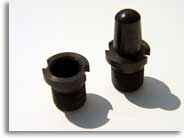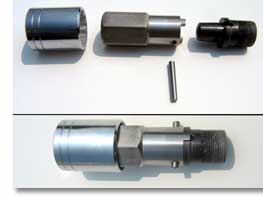|
Freeman's Dowel Installation Guide
Choosing Your Dowel Style The choice between square head style and the true-line style is one of personal preference. The Husky dowel line, a Freeman exclusive, is our stronger, heavy-duty dowel. Each style of dowel requires its own set of installation tools. Each title below links to the respective product pages. Creating The Hole The following instructions illustrate the installation of Freeman Square-Head Steel Dowels. However, this process also applies to Freeman True-Line Steel Dowels and Freeman Husky Dowels, with exceptions as noted.
Installing the Dowel Pin & Bushing
|
||||||||||||||||||||||||||||||||||
















